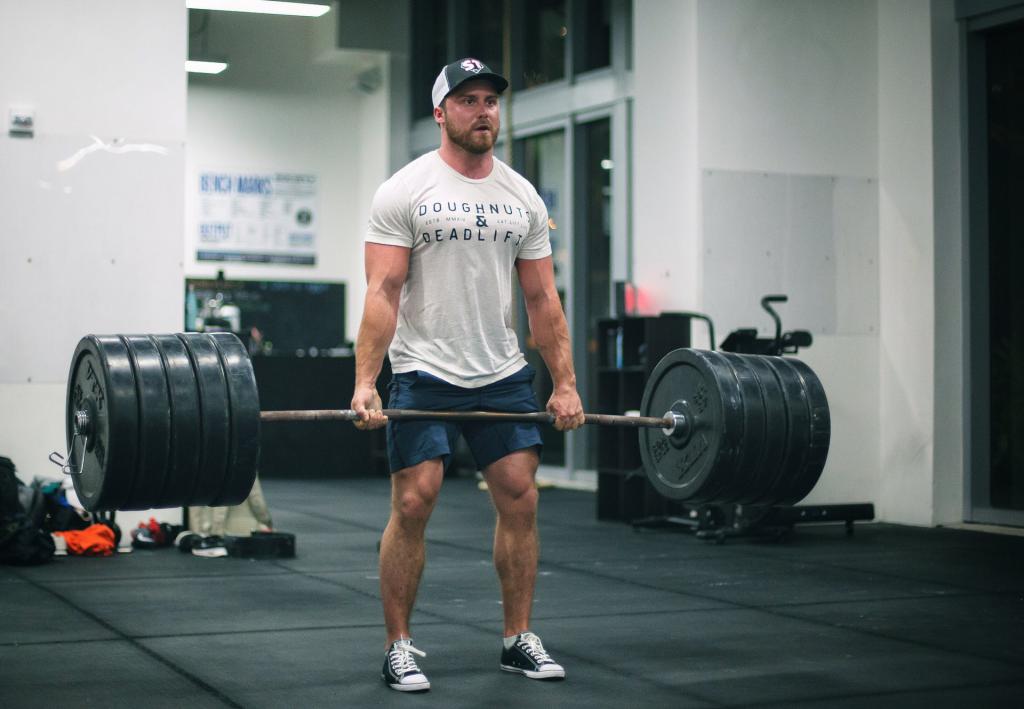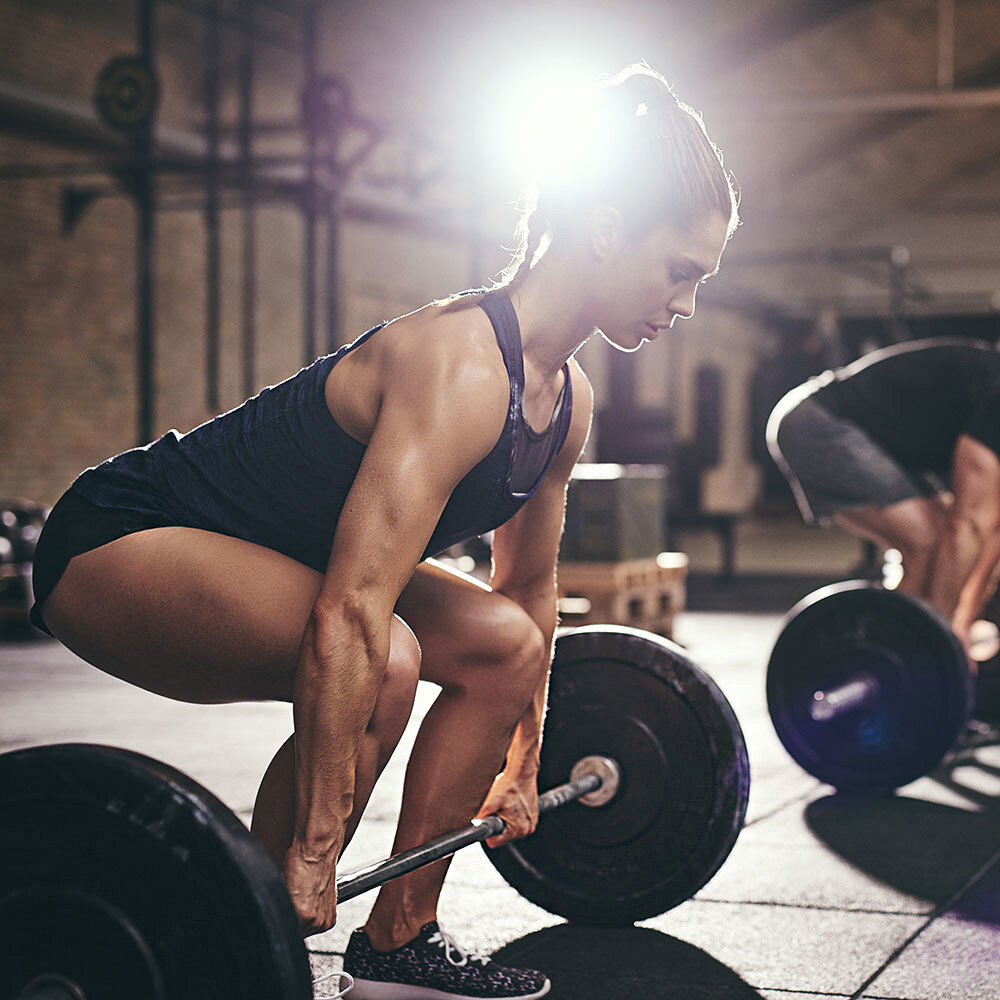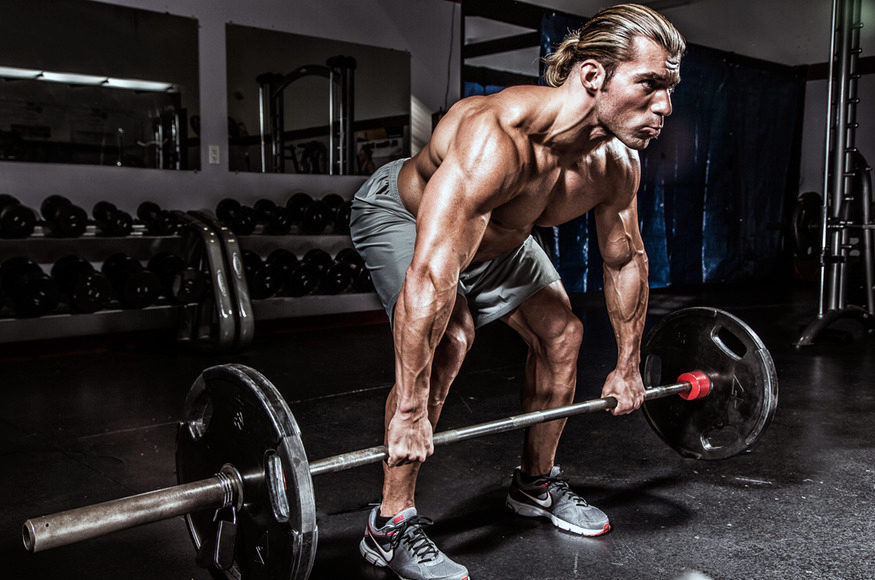The deadlift is probably the most controversial exercise among the complex basic exercises . It is said to be bad for your back and has had some horror stories about deadlift injuries and discomfort. With the right deadlift technique, you actually do exactly the opposite. You strengthen and stabilize your lower back and protect your spine in all situations. For this reason, variants of it are often used in the rehabilitation area.
I myself was skeptical about the deadlift for a long time. But that’s also because I keep seeing people who don’t deadlift well. Mostly that’s because they were never really taught. However, in the end I was sometimes more papal than the fitness pope myself when it came to executing other people. Today I know that you never have to do everything 100% perfect for this exercise to be useful and not harmful.
In my opinion, however, there are a few things that are really, really important. These are a few rules to keep in mind when improving your deadlift technique. If you take these things to heart, you will be performing significantly better than most other exercisers. In addition, you don’t lose yourself unnecessarily in details. In this article I want to introduce you to what things I think.

I’ve broken the article into the following sections. With one click you come directly to the section that interests you most.
After reading this, you should know enough about the deadlift to be able to use it in your training with a good conscience with a good deadlift technique.
Why you should deadlift
There are many good reasons to have the deadlift as a central exercise in your training plan. This applies no matter what your current training goal is. If you want to build muscle mass and do hypertrophy training , the deadlift fits into your plan as well as strength endurance training . Why this is so and which arguments are the most important in my opinion, I want to explain to you below.
1) Deadlift is an effective, complex, basic exercise
In my opinion, basic exercises should always form the basis of your training plan. These exercises can be done in variants with free weights or with your own body weight. They are characterized by the fact that large parts of the body are trained at the same time and thus lay a good basis for an effective workout.
Among the basic exercises, the deadlift is particularly functional and, in addition to the squats , most and largest muscle groups are activated here. In contrast to isolation exercises , the high load also puts a lot of strain on the entire cardiovascular system. That’s why these exercises are particularly difficult for me during my morning exercise .
Among other things, this leads to improved blood circulation and a more efficient supply of nutrients. This is also related to the fact that the energy consumption is very high. This is very useful if you want to define your muscles. In addition, large amounts of growth hormones are released. These will help you develop your muscles.
2) You get strong core muscles
The core muscles are often referred to as the body’s power center. These muscle structures are involved in almost every movement in sport and in everyday life. No other complex exercise is as challenging and effective in training your core muscles and especially your lower back as the deadlift and its variations. Even with the squat, in which the core muscles also play a very central role, the activation of the core muscles is nowhere near as high.
Incidentally, many back problems can be improved, remedied or preventively avoided by strengthening the core and back muscles. This is where the deadlift with good execution can play a crucial role.
3) Injury prevention through good deadlift technique
In principle, this argument follows on from the previous two, but I would like to underline that again here. In all everyday situations where you have to pick something up, a good deadlift technique is useful and helps prevent injury. You just instinctively know how to better pick up heavy things.
In addition, your body center is strong and stable in all other life situations through regular training. This means that you can cope better with other everyday stresses. Where one or the other has back problems straight away because they had to carry something, you are already thinking about your next training.
4) More training performance with the deadlift
Incidentally, more power and stability in your core will also benefit you in your other exercises. If you increase your core stability by deadlifting with good technique, then in the medium term this will also have an impact on the development of your performance in many other exercises. So you will generally be able to increase your strength a little faster. This in turn also has a positive effect on you Muscle building training off.
Which muscles are trained in the deadlift
As mentioned earlier, the deadlift is a complex basic exercise. Different muscle groups are challenged accordingly. The following muscle groups are particularly strongly trained:
Simply put, when you deadlift, you mainly train your lower back, the front and back of your thighs and your buttocks. If you would like to know more precisely, these are essentially the following muscles:
- Back extensor – musculus erector spinae
- Four-headed thigh muscle – quadriceps femoris muscle
- Gluteus greater muscle – gluteus maximus muscle
- Hamstrings – biceps femoris muscle
- Half vision muscle – musculus semitendinosus
- Flat vision muscle semimembranosus
These are basically the essential deadlift muscles. In addition, the lats, arms and abdominal muscles are involved to a not insignificant extent. If you train without a pulling aids *, your forearms will likely quickly become your weakest link because the deadlift requires a lot of grip.
Because of these circumstances, it is also often discussed whether the deadlift in split training should be assigned to leg exercises or back exercises. My opinion on this is very clear: an exercise with so many legs is part of leg day. In addition, I subsequently keep my lower back out of the upper body tag (for a two-way split) or the pull tag (for a three-way split). Which split training plan is the right one for you depends on you and your time, your experience and your preferences.
What you should consider for a good deadlift technique
Let’s finally get to the deadlift execution. There are many subtleties to watch out for in deadlifting. However, I paid attention to where mistakes are often made and how you can quickly improve your deadlift technique with a few things to look out for.
In the following, I would like to briefly introduce you to the 5 most important rules of a good deadlift technique.
Deadlift Technique Rule 1: Straight Back
Much of the power in deadlifting, as the name suggests, comes from the lower back. For this reason it is extremely important that everything goes right here. So make sure that you keep your back straight, that is, neither a hunched back nor a strong hollow back. A minimal rounding or a slight lordosis are ok.
You should pay close attention to your straight back first of all and throughout the entire movement. If deadlift problems arise, it is in the vast majority of cases due to an overload combined with an unhealthy posture of the spine. If you keep your back straight, you are doing a lot of things right.
Also keep in mind that your back can be rounded both above and below. So there are two points that you should focus on in this regard. By the way, the following rules also help to make it easier for you to keep your back straight.
Deadlift execution rule 2: body tension
A stable stance and maximum body tension during the entire movement are essential for a clean execution of the deadlift. Above all, this includes tension in the upper and lower back. If you have problems with upper back tension and your chest sags, try to imagine how you want to pinch and hold a tennis ball between your shoulder blades.
In addition, your legs and your body should be under tension throughout the entire sequence of movements. Make sure to build up this tension before you start moving. If this is difficult for you, try to imagine shortly before the start of the movement that you have already started the movement. That might sound strange, but this simple trick from mental training has already helped some.
You support your body tension and thus your strength development even further by paying attention to correct breathing. Before starting the movement, take a deep breath, press the air in and contract your abdominal muscles.
So that you can really keep the tension throughout the whole exercise, you should always take a break between sets long enough.

Deadlift technique, rule 3: bar close to the leg
In the starting position and on the way up with the classic deadlift, you stand close and straight with your shoulders over the bar, which is very close to your shins. The perfect position is theoretically about halfway between your toes and your shins. In my experience, however, the tendency usually goes too far forward.
If you make sure to bring the bar as close to your shins as possible, you will learn best. This also helps you to comply with rules 4 and 5. If you don’t do that and you have the bar close to your shin, your knees are in the way.
Are there a few bruises at the beginning? Probably! But if you put on thick sweat jogging pants for deadlifting, like I do, then that’s not so bad at all. 😉
Too often I see exercisers who tip forward during the deadlift due to the suboptimal shift of their body’s center of gravity. It can also be difficult to keep your back straight. In combination, it looks pretty unhealthy.
If you make sure that you start with the bar close to your shins and shoulders above the bar, this will not happen to you.
Deadlift execution rule 4: Push the buttocks backwards / forwards
In addition to the straightening, the hip extension is the central part of movement in the deadlift. This is something that I have not found it easy for myself to internalize.
For me and for many people I have observed, it is particularly important to consciously push your hips back on the way down. If you don’t, either your back is too steep and you take your lower back out of the game or your knees are in the way on the way down and it will be much more difficult for you to keep your back straight.
In the same way, on the way up, you should consciously push your hips forward at the same time as you straighten your legs and straighten up. This is the only way to get the tension and the flow of movement that you need for a clean deadlift.
Deadlift Technique Rule 5: Smooth Movement
Last but not least, one more thing that you have already addressed in part with the fourth rule. The point is that a good and healthy deadlift execution should always be a flowing movement.
I know this is easier said than done. However, if you do the straightening, the extension of the legs and the hips largely parallel, then you have already made a gigantic leap towards a really good deadlift technique.
Once all of this seems a bit sequential and bumpy, don’t worry and keep working on it. The feeling for it comes over time, if you pay attention to it. Especially in the limit area during maximum strength training This is easier said than done. When I am heavier, I sometimes tend to start stretching my legs first and then straighten up and push my hips forward. So I’m also constantly working on my technology.
However, do not make any jerky movements in order to achieve a certain weight! You can really avoid them because they really don’t bring you anything apart from an increased risk of injury.
Bonus tip: Always let someone look at your execution
This is not exactly a technique rule, but it is very valuable for good deadlifting technique. If you have the opportunity to train with a training partner, then use this partner too. Ask them to pay attention to your execution. Let them make a video of your technique over and over again. Offer him or her the same. So you both benefit from it.
Sometimes you just assess things differently than they look on the outside and you don’t notice mistakes. These can also creep in very slowly. A training partner helps you to recognize these and thus to react to them early.
If you have no one to accompany you during your training, then at least take regular pictures in selfie mode. It is best to do this from the side, then you will recognize the typical sources of error the fastest.
If you just pay attention to these things and use them one by one to gradually improve your deadlift, you will be deadlifting better in a short time than 99% of people who work out in the gym.
Here’s a video of me deadlifting
This is how it could look like. The execution is not always 100% perfect for me either, but as I said, it is most important that you concentrate on the things that really make a difference and contribute to a quick improvement of your technique.
Which accessories make sense for the deadlift
At the latest when you have been training a little longer and also doing deadlifts, but probably much earlier, you will ask yourself the question of good equipment. After all, you want to get the most out of your training.
In the following I would like to introduce you to frequently recommended equipment for the deadlift and briefly explain whether and under what circumstances I consider its use to be useful.
Knee joint supports
Every now and then, I’ve seen people deadlifting at the gym with knee braces. I don’t use knee supports myself. I’ve tried this several times and I just find them annoying and don’t think they are any good in the classic deadlift. They are in the way when pulling the bar over the knee, make it difficult to bend the knee and thus have an unfavorable influence on the starting position
For this reason, I will not make a recommendation at this point. If an advocate of knee bandages for deadlifting reads this, please contact me or write a comment about why you should lift with bandages.
What alternatives to the deadlift are there
Again and again I am asked about alternatives to the big exercises. This is particularly common with the deadlift because some people want to avoid the exercise. As mentioned earlier, if you follow the rules of a good deadlift and thus have good deadlift technique, worry is unfounded.
I would like to mention some variants or alternatives to the classic deadlift, aka deadlift, at this point. After all, it is absolutely legitimate to bring a little variety and variety into your training every now and then. In addition, different focal points can be set with different variants. In my opinion, the most important deadlift alternatives or variants are:
- Sumo deadlift: Alternative with a wide stance, shorter distance and less load on your back
- Romanian deadlift: Variation without sitting down, for better isolation of the rear muscles
- Trap-bar deadlift: Alternative with the center of gravity shifted backwards, shorter distance and protection of the shins
- Dumbbell deadlift: Variation with one or two dumbbells
If you are interested in me writing again about one or more of these alternatives in more detail, please send me a comment or write to me on my Facebook account or my Instagram profile . You can of course also write to me there if you have any other questions, requests or suggestions for an article here on the blog.

Your conclusion on the deadlift
I hope after reading this article you now know the numerous benefits of deadlifting on a regular basis. You should also know what to really look out for so that your deadlift technique is good enough for you to make safe and good progress. The accessories mentioned are optional and can help you to get a little more out of it at one point or another.
If you would like to find out more about the correct execution of deadlifts and other basic exercises, I can send you the book Starting strenght by Marc Rippetoe * I recommend. From this book I learned a lot about performing and using the basic exercises.
If you want to go a step further, then I recommend that you do a technique check with a specialized trainer every now and then or attend a barbell workshop with one of the experts in this field. I have already attended several such seminars myself and still take a lot with me.
